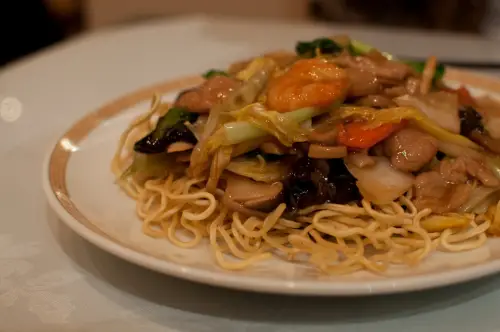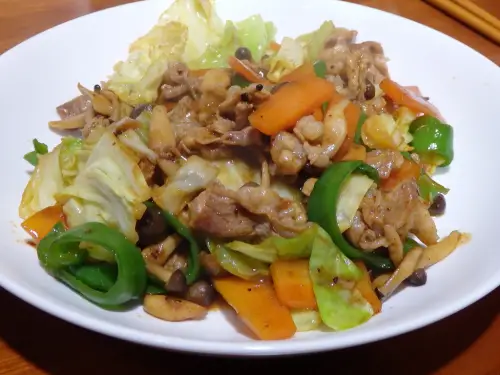Chinese food is very popular all over the world. In many countries, there is likely be Chinese restaurants, where dishes such as chow mein and chop suey are served. These two viands are favored by many for their delicious taste and ease of preparation. They are cooked in the same way but the ingredients and manner of serving the dishes are quite different. Read on and find out the differences between chow mein and chop suey.
Summary Table
| Chow Mein | Chop Suey |
| Originated from northern China | Originated from southern China or from the chefs of the Chinese Ambassador in the U.S. |
| Stir-fried and made with noodles, meat, vegetables, and spices | Stir-fried and made with vegetables, meat, and spices |
| Has a thinner type of sauce | Has a thickened sauce |
| Can be eaten as is since it is made with noodles | Usually served with rice |
| Two methods of preparation – steamed (steamed chow mein) or fried (crispy or Hong Kong-style chow mein) | Only one method of preparation but there are many variations in the recipe |
Descriptions

Chow mein is derived from the Taishan word chau mieng, meaning “noodles.” Chow mein comes from northern China, in the Pearl River Delta region of Taishan. In the Northern part of China, noodle dishes are in demand.
This is the area where wheat and other grains, which require cooler weather, are grown. Ingredients of chow mein include meat (pork or chicken), vegetables (cabbage and bok choy), thin sauce (soy, garlic, oyster sauce), and most importantly, egg noodles. In this dish, the noodles are flavored with sesame oil, soy sauce, and rice vinegar.
This recipe from northern China rapidly spread throughout the country mostly because of the way the egg noodles hold flavors. The traditional way of cooking the noodles is by steaming. However, other countries like Hong Kong and the U.S., usually fry the noodles. Some people prefer eating crispy instead of soft noodles, but both versions of chow mein are served in China and the U.S. The dish is usually eaten as is since it already contains noodles.

Chop suey is derived from the Cantonese word shap sui, meaning “cooked mixed entrails.” Some say that chop suey originated in southern China while others say that the recipe was created by Chinese migrants in the U.S. One popular belief was that the dish was invented by the chefs of the Chinese Ambassador in New York City in 1896. This dish was meant as a symbolic fusion of both cultures and a way to combine the Chinese flavor with common American foods like celery and pork. It is essential to note, though, that there is no region in China that currently has chop suey as a traditional local dish.
The main ingredients of chop suey are meat (pork or chicken), vegetables (celery, snow peas, bamboo shoots, water chestnuts, bok choy), onion, and mushrooms. The thick sauce consists of oyster sauce, soy sauce, garlic, and cornstarch (used as a thickener). Chop suey is usually served with rice.
Other traditional Chinese meals would include this dish with other viands and served family-style.
Chow Mein vs Chop Suey
What is the difference between chow mein and chop suey? Chow mein originated from northern China while chop suey’s origin is somewhat debatable.
Some say chop suey originated from southern China while others say the dish is a product of the fusion of the Chinese and American cultures. Both dishes are prepared stir-fried with meat, vegetables, and sauce. However, chow mein contains noodles, has a thin sauce, and is served and eaten as is. Chop suey, on the other hand, doesn’t have noodles, has a thicker type of sauce, and is usually served with rice and other viands. There are two methods of preparing chow mein, as the noodles can either be steamed or fried. Conversely, there is only one method of preparation for chop suey but there are many variations in the recipe and ingredients.





